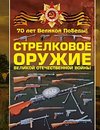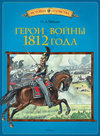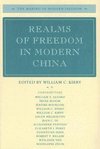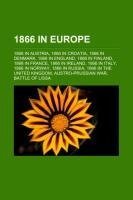
1866 in Europe
Source: Wikipedia. Pages: 33. Chapters: 1866 in Austria, 1866 in Croatia, 1866 in Denmark, 1866 in England, 1866 in Finland, 1866 in France, 1866 in Ireland, 1866 in Italy, 1866 in Norway, 1866 in Russia, 1866 in the United Kingdom, Austro-Prussian War,... Viac o knihe
Produkt je dočasne nedostupný
14.43 €
bežná cena: 16.40 €
O knihe
Source: Wikipedia. Pages: 33. Chapters: 1866 in Austria, 1866 in Croatia, 1866 in Denmark, 1866 in England, 1866 in Finland, 1866 in France, 1866 in Ireland, 1866 in Italy, 1866 in Norway, 1866 in Russia, 1866 in the United Kingdom, Austro-Prussian War, Battle of Lissa, French campaign against Korea, Battle of Königgrätz, Dimmock v Hallett, Third Italian War of Independence, The Great Tea Race of 1866, Battle of Custoza, Uprising of Polish political exiles in Siberia, Finnish famine of 1866-1868, SS London, Invasion of Trentino, Exhibition of National Portraits, Battle of Nachod, 1866 in Wales, Armistice of Cormons, Battle of Lamac, Battle of Bezzecca, Oaks explosion, Battle of Trautenau, Battle of Gitschin, Peace of Prague, London Conference of 1866, Battle of Münchengrätz, Treaty of Vienna, 1866 English cricket season, 1866 vote of no confidence against the government of the Earl Russell. Excerpt: The Austro-Prussian War (in Germany known as German War, Seven Weeks War, Unification War, German-German War, German Civil War or Fraternal War) was a war fought in 1866 between the German Confederation under the leadership of the Austrian Empire and its German allies on one side and the Kingdom of Prussia with its German allies and Italy on the other, that resulted in Prussian dominance over the German states. In the Italian unification process, this is called the Third Independence War. In English it is also commonly known as the Seven Weeks' War. The major result of the war was a shift in power among the German states away from Austrian and towards Prussian hegemony, and impetus towards the unification of all of the northern German states in a Kleindeutschland that excluded Austria. It saw the abolition of the German Confederation and its partial replacement by a North German Confederation that excluded Austria and the South German states. The war also resulted in the Italian annexation of the Austrian province of Venetia. For centuries, the Holy Roman Emperors who mostly came from the Habsburg family had nominally ruled all of "Germany" - the Holy Roman Empire. In fact, however, the territory of Central Europe was split into a few large states and hundreds of tiny entities, each jealously maintaining its de facto sovereignty and independence with the assistance of outside powers, particularly France. Austria - the personal territory of the Habsburg Emperors - was traditionally considered the leader of the German states, but Prussia was becoming increasingly powerful and by the late 18th century was ranked as one of the great powers of Europe. The Empire was formally disbanded in 1806 when the political makeup of Central Europe was re-organised by Napoleon. The German states were drawn into the ambit of the Confederation of the Rhine (Rheinbund) which was forced to submit to French influence until the defeat of the French Emperor. After the Napoleonic Wars had en
- Vydavateľstvo: Books LLC, Reference Series
- Formát: Paperback
- Jazyk:
- ISBN: 9781157736783

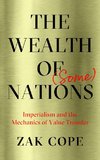
 Anglický jazyk
Anglický jazyk 



 Ruský jazyk
Ruský jazyk 
